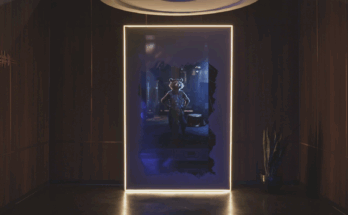A California company, Wind Harvest, is in high gear to change the dynamics of wind energy and to vastly improve the economics of wind farms.
But the company wouldn’t be marketing to large energy users and wind farm operators today if it hadn’t used crowdfunding for its recent rounds of financing. Crowdfunding can get a startup over the hill.
Kevin Wolf, Wind Harvest co-founder and CEO, explained that developers of hardware face a double problem when it comes to financing: The banks won’t finance their customers’ projects until the technology has been certified and, in Wind Harvest’s case, dozens of their unique wind turbines have been operating for at least a year which requires money.
Wolf said, “It takes about two years to complete a ‘technology readiness level,’ unless a company is well-funded. Six months to have all the components arrive, six months to a year to install and fully test the prototype, and then another six months to complete the new design.” Meantime, a team of engineers and the bills have to be paid.
Venture capitalists have shown a decided disinclination to finance hardware, preferring computer-related software products, he said.
But with crowdfunding, often through a special-purpose company, thousands of individuals have become venture capitalists in companies like Wind Harvest. Many of those investors have hit it big.
Two standout companies which grew into multi-billion dollar ones: Oculus VR and Peloton.
Oculus, the virtual reality technology company, used crowdfunding to raise $250,000 in 2012. Two years later, it was acquired by Facebook for $2 billion.
Peloton, the fitness company, started with crowdfunding of $307,000, achieved a valuation of $8.1 billion its initial public offering, and rose to astronomically high valuations during the Covid pandemic. It has now fallen back considerably, after many difficulties in the fitness industry.
Wind Harvest is essentially offering new infrastructure which, should it catch on, would give it a steady and fairly predictable path forward as both a wind turbine Original Equipment Manufacturer and as a renewable energy project developer.
The company’s product, trademarked as Wind Harvester, is a vertical-axis wind turbine (VAWT): The drive shaft and the electrical generator are aligned vertical to the ground. In traditional wind turbines, those components are horizontal to the ground.
The most famous vertical-axis wind turbine is the Darrieus, named after a French engineer who patented it in 1926. It has an elegant, eggbeater shape almost like a fine outdoor sculpture. But it ran into problems with vibration and other technical drawbacks and wasn’t a commercial success.
At the outset of the energy crisis in 1973, Sandia National Laboratory in New Mexico, one of the jewels in the crown of the national laboratory system, did considerable theoretical work on wind turbines, concentrating on vertical-axis designs. But when the research was moved to another laboratory, the horizontal-axis wind turbine (HAWT) became the focus.
The codes developed at Sandia are foundational to the Wind Harvest design. Wolf explained that the choice between VAWTs and HAWTs isn’t an either-or choice, except where wind shears are high and wind near the ground slows down. Then tall, horizontal-axis wind turbines have the advantage.
Wind Harvest turbines are designed to capture the wind on ridgelines, hills and mountain passes where wind funnels and accelerates turbines under the tall horizontal-axis turbines. VAWTs can take advantage of the powerful wind that swirls around near the ground. This turbulent wind at the surface is an unused resource now.
With the bottom of their blades between 25 feet and 50 feet off the ground and installed in pairs 3 feet apart from each, Wind Harvest turbines can double the output of electricity from a wind farm while still leaving enough clearance for agriculture, whether it is grazing animals or growing crops. So, add efficiency to the virtues of these turbines: better use of the wind resources, land and infrastructure.
Thanks to crowdfunding in four tranches, Wind Harvest is now ready to go to market with utility scale installations.
Wolf listed these additional virtues for VAWTs:
- They can be entirely made in America. Right now their blades are extruded by Step-G in Germany.
- They are designed to withstand the 180 mph wind gusts from a Category 5 hurricane.
- Because they are short, they can use larger permanent magnet generators (PMGs) not made of rare earth magnets. For example, their PMGs can use ferrite magnets which are iron-based.
- Wind Harvest installations have a fatigue life of 75 years with maintenance and periodic refurbishment. Most turbines now in use must be replaced after about 25 years.
The first Wind Harvesters to be put into service are planned for a dredge spoil-created peninsula on St. Croix, the largest of the U.S. Virgin Islands, located in the Caribbean Sea. The entire output of the first phase of the project will be bought by the oil refinery adjacent to the project site and replace the burning of costly propane for generation.
Big ideas now have funding sources besides “Shark Tank,” venture capital, and the banks.



